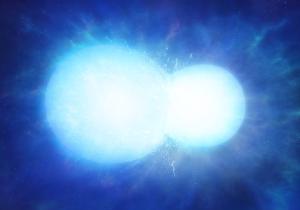Blog
Constant Speed
28 August 2020
 NASA/CXC/Univ of Texas at Arlington/M. Millard et al
NASA/CXC/Univ of Texas at Arlington/M. Millard et alFour centuries ago, Johannes Kepler observed a bright new star in the night sky. Astronomers from all over the world noticed it, but it came to be known as Kepler’s star. It was caused by a stellar explosion 20,000 light-years from Earth, and it was the most recent naked-eye supernova to appear in our galaxy.
We now know Kepler’s star was a Type Ia supernova. It’s the type of supernova we use to measure galactic distances. We now see it as a supernova remnant known as SN 1604, a cloud of expanding gas and dust cast out by the explosion.
 Kepler/De Stella Nova
Kepler/De Stella NovaBecause it is relatively close, and astronomers saw it occur, SN 1604 is one of the most widely studied supernova remnants. Modern space telescopes such as the Chandra X-ray observatory have observed the remnant for twenty years. It’s given us a deeper understanding of how remnants evolve. And the results are still surprising.
Recently, a study looked at how ejected material’s speed moves over time, and it turns out to be incredibly fast.1 In this study, the team tracked the speed of more than a dozen “knots” or clumps of debris within the supernova remnant. The fastest of these knots is moving at more than 10,000 kilometers per second. The average speed of the knots is nearly 5,000 kilometers per second. These speeds are comparable to speeds seen in extra-galactic supernovae immediately after they occur. It means that even after four centuries, the remnant debris hasn’t slowed down.
This continued high speed is likely because the explosion’s shockwave clears most of the interstellar gas from the region. It also means that supernovae are incredibly efficient at seeding the Universe with new material. The Sun, Earth, and humans are all products of remnant gas and dust.
 University of Warwick/Mark Garlick
University of Warwick/Mark GarlickThe study also gives us some clues about how Type Ia supernovae occur. One common thought is that they happen when a white dwarf and red giant star are in a close binary orbit. Material from the red dwarf is captured by the white dwarf, causing the star to collapse and explode when its mass crosses the Chandrasekhar limit. This study found evidence of a star within the remnant, and the motion of the knots isn’t spherically symmetric. This suggests that the supernova was caused by the collision of two white dwarfs instead.
It’s been 400 years since the last relatively close supernova, which is an unusually long time. There should be a supernova in our galaxy about every 50 years. But fortunately, SN 1604 still has plenty to teach us until the next nearby supernova occurs.
Millard, Matthew J., et al. “An Ejecta Kinematics Study of Kepler’s Supernova Remnant with High-Resolution Chandra HETG Spectroscopy.” The Astrophysical Journal 893.2 (2020): 98. ↩︎